You should know by now that our ancestors were quite different from us modern humans, right? But what about the ancestors of some modern animals, were they similar or different from their descendants? You will meet them right now and see it for yourself!
More info: realworldfatos.com
Giant Crocodile Tears
Let’s start with crocodiles and alligators, before they existed we had Deinosuchus, who lived in the Cretaceous period in North America. Only his bite reached 15 tons of pressure, his body could reach 10 meters (32 ft) in length with a total weight of 6.5 tons.
It was so big that it probably attacked dinosaurs like modern crocodiles attack gazelles.
The Largest Turtle Ever
As you may have guessed, the Archelon is the ancestor of some modern turtles. This being was a large sea turtle that lived in the Cretaceous period between approximately 75 and 65 million years ago, and was found in the United States.
This animal could reach up to 4 meters (13 ft) long and weighed around 2 tons (4,900 lb), but despite in size, females still had to crawl on the beach to lay their eggs.
Give Me a Hand!
The Megaxantho Zogue was a crustacean, a type of prehistoric crab that lived about 20 million years ago. Found in Mexico recently, it was the first crab to develop a claw just to break the shell of its food. This was such an important evolution that crabs still have it today.
Run Willy, Run!
The Megalodon is obviously the ancestor of the famous sharks, he lived between 23 and 2.6 million years ago in the Miocene period in the Pacific Ocean. Its teeth were in many ways similar to those of the Great White Shark today, but with a size that could exceed 17 centimeters (6 inches) in length, hence its name, “Megalodon” which means “Big Tooth”.
This creature was between 14 and 16 meters (47–52 ft), with a mass that could reach 50 tons. They were so large that adult megalodons are believed to have eaten whales.
They became extinct when the polar seas became too cold for their survival, which allowed whales to thrive during the summer.
Really?
Believe it or not, it is possible that our chickens are modern descendants of the famous Tyrannosaurus Rex.
In adulthood, a T. Rex could reach about 4 meters (13 ft) in height and 12 meters (39 ft) in length, only its skull could exceed 1.4 meters (4,5 ft), and its mass could exceed 8 tons (16000 pounds).
The females were actually bigger than the males, but both sexes had 60 teeth over 20 centimeters (7,8 inches) each, and they still reached 40 km/h (24 mph) when it was time to hunt.
These giants lived during the late Cretaceous period, approximately 66 million years ago, across the region that today is North America.
Honorary Title
The mammoth is probably the most famous “ancestor” on that list, but no, they are not technically ancestors of modern elephants, they are distant cousins. In other words elephants and mammoths have the same ancestor, but they separated and evolved side by side for centuries.
Like their modern relatives, mammoths were quite large, the largest known species reached heights of 4 m (13 ft) and weights of up to 8 tonnes (16000 punds), while exceptionally large males may have exceeded 12 tonnes (24000).
However, most species of mammoth were actually the size of a modern Asian elephant, 3 m (9 ft) tall and rarely exceeding 5 tons (10000 pounds).
God dams!
An extinct family of giant beavers, these were the Castoroides, they were over 6 feet tall (1,80 m) and weighed at least as much as an adult human being. These giant beavers may even have coexisted with humans in what is now North America, where they were originally from. They only disappear from the fossil record about 11,000 years ago.
Castoroides were some of the biggest rodents that ever existed. Although similar in appearance to modern beavers, they had a lower brain-to-body ratio and a different dental arrangement, which probably made them less able to build the famous dams that their descendants are known to make.
Real Life Unicorn
The Elasmotherium, also called the Siberian Unicorn, obviously gave rise to rhinos. It existed until about 39,000 years ago and was up to 4.5 meters (14 ft) long and could weigh up to 4 tons (8000 pounds). But although they were giants, they are believed to be very gentle herbivores, they only fed on grass, and did not go around looking for fights unless it was necessary to defend themselves.
How About a Human for Lunch?
Titanoboa was the largest snake ever known, this creature lived about 10 million years after the extinction of the dinosaurs.
A member of the boidae family of non-poisonous snakes, the titanoboa probably fed almost exclusively on fish, thriving in the tropical climate of South America. It was about 12 meters (39 ft) long and weighed up to 1,135 kg (2,500 pounds).
Distant Cousins
This is Dormaalocyon latouri, a species of carnivorous mammal that lived about 56 million years ago. This species is one of the oldest carnivores we know, it is believed that it was this animal that gave rise to modern dogs, cats, weasels and even bears. This being walked on all fours, but spent most of his time in trees looking for places to sunbathe.
It also means that dogs and cats are nothing more than distant “cousins”, just like humans and chimpanzees.
The Original Vegan
And before modern men and women we had Australopithecus anamensis, which lived between 3.9 and 4.2 million years ago.
Although he is our ancestor, he is believed to be a vegetarian, he ate fruits, leaves and seeds, living in perfect harmony with the smaller animals. They were peaceful, and didn’t murder anything, very different from today, right? But sadly, being a pacifist is what probably led to his extinction.
Slow and Steady
Megatherium, also called Giant Sloth, as you may have imagined, gave rise to modern sloths, but they are also distant relatives of modern anteaters and even armadillos.
This being was one of the largest known terrestrial mammals, weighing up to 4 tons (8000 pounds) and measuring up to 6 m (19 ft) in length from head to tail. Being the size of modern elephants, it would only have been smaller in its time than some species of mammoths.
Big (Prehistoric) Foot
Gigantopithecus is probably the “monster” that gave rise to the Bigfoot myth. It was a primate that lived in the Pleistocene, approximately between 5 million and 100 thousand years ago, in China, India and also in Vietnam, inhabiting regions and even a similar habitat to those of the first hominids, such as Homo erectus.
Today it is known that Gigantopithecus was about 3 meters (9 ft) tall and weighed around 400 kg (880 pounds), being two to three times bigger than the current gorillas.
Most likely, this being is an ancestor of several species of modern primates, being distant cousins of orangutans.
You Like Insects Right?
Meganeura monyi was a species of prehistoric insect that lived in the Carboniferous period, being very similar to the current dragonflies.
With a wingspan of more than 75 cm (30 inches) wide, it was the largest flying insect that ever lived on Earth, so much so that it was a natural predator that possibly fed on other insects and even small amphibians and reptiles.
Are You Afraid?
Phorusrhacidae, also called “Terror Birds”, are an extinct family of large carnivorous birds.
They varied from 1 to 3 meters in height (3 to 9 ft), had huge and curved beaks, like those of modern birds of prey, developed especially to tear the flesh of their prey, their legs were agile and very muscular, so much so that these beings could reach up to 50 km/h (30 mph).
Its time scale covers 62 to 1.8 million years ago. Today his closest relatives are the seriemas, which are 80 cm (31 inches) tall and do not hurt anyone.
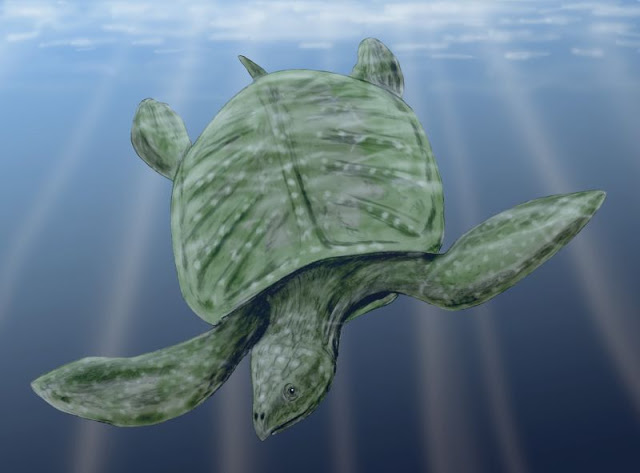
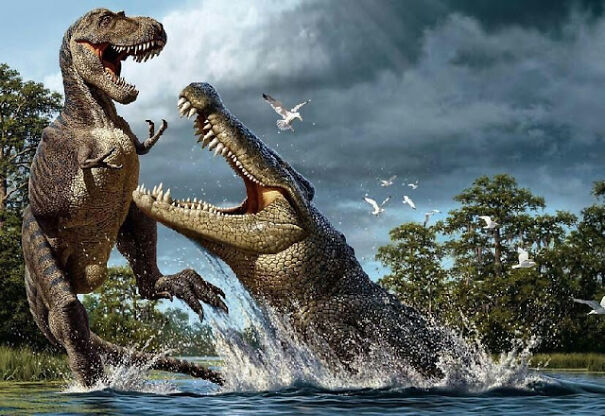
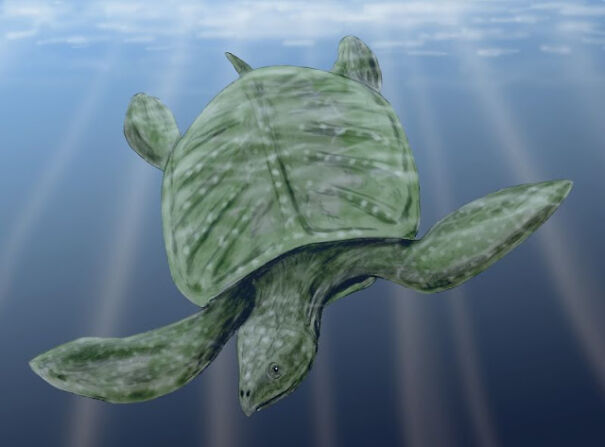
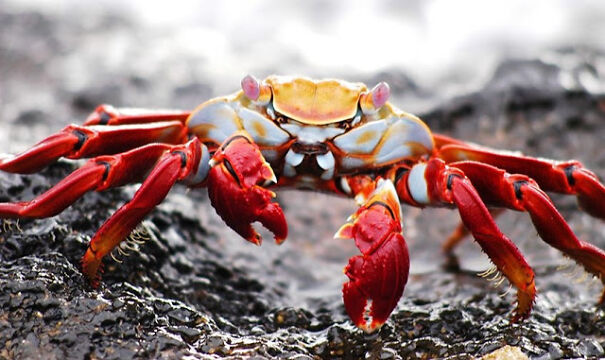
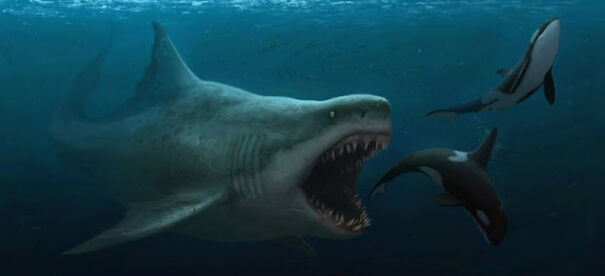
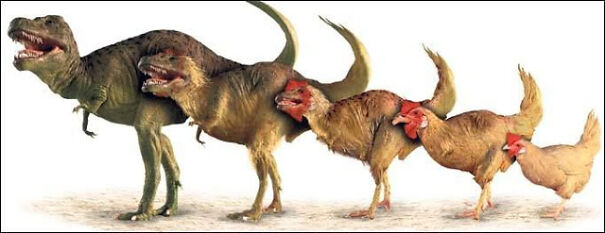
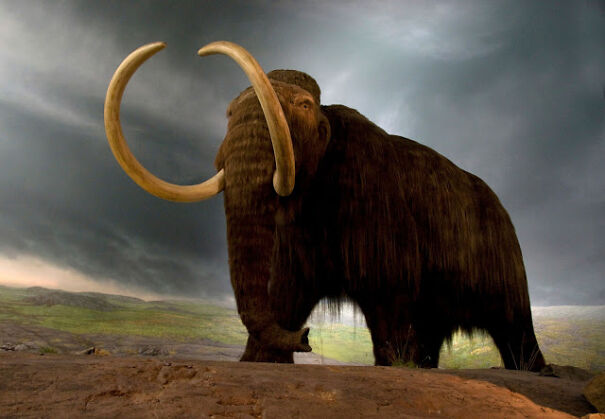
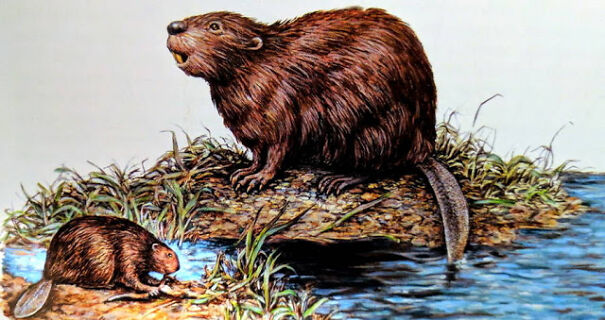
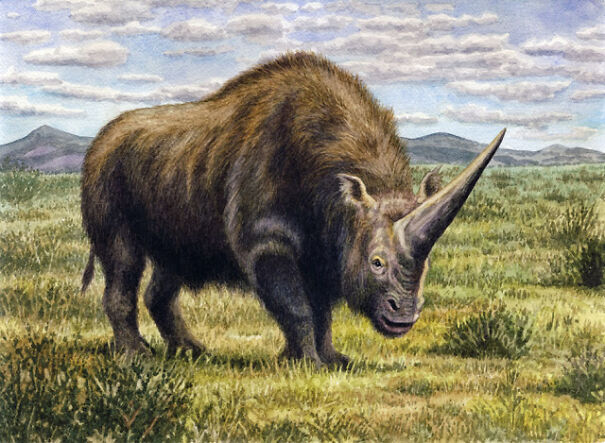
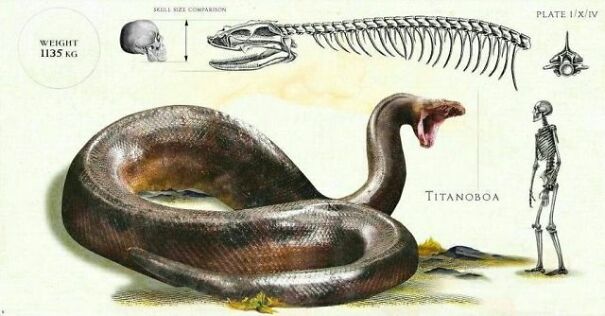
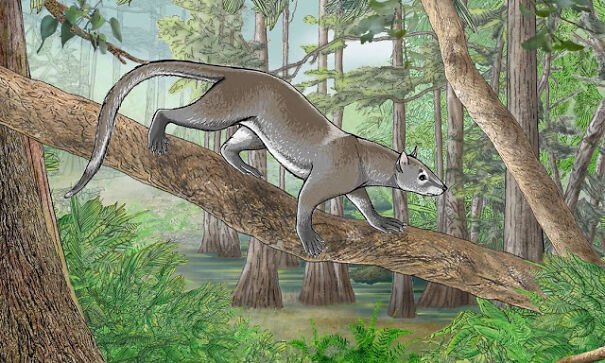
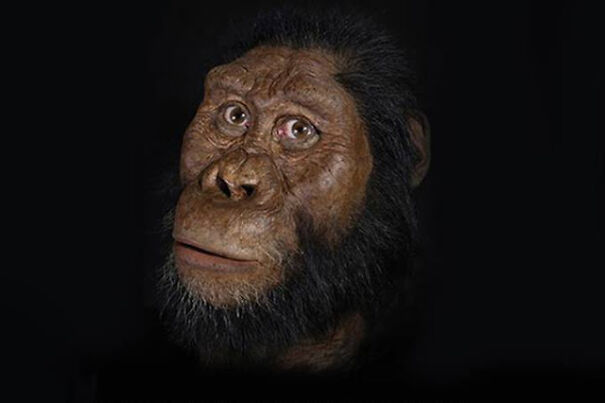
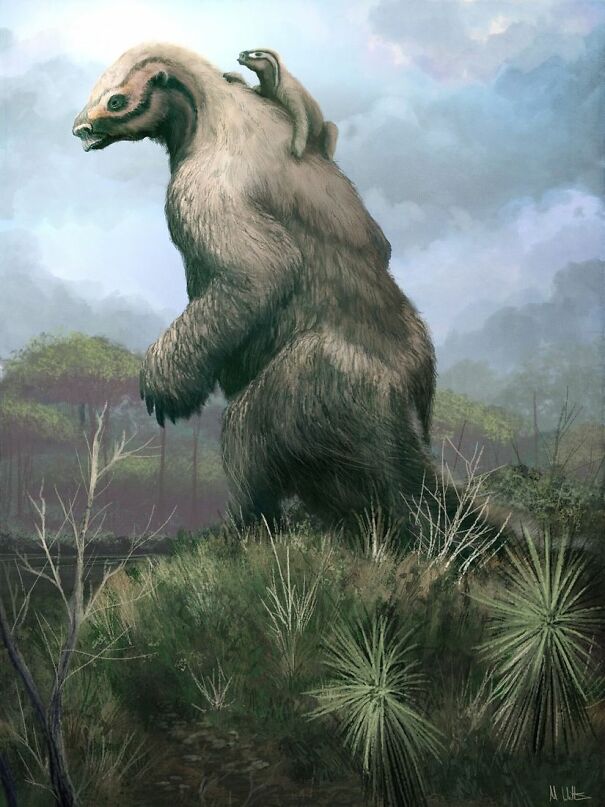
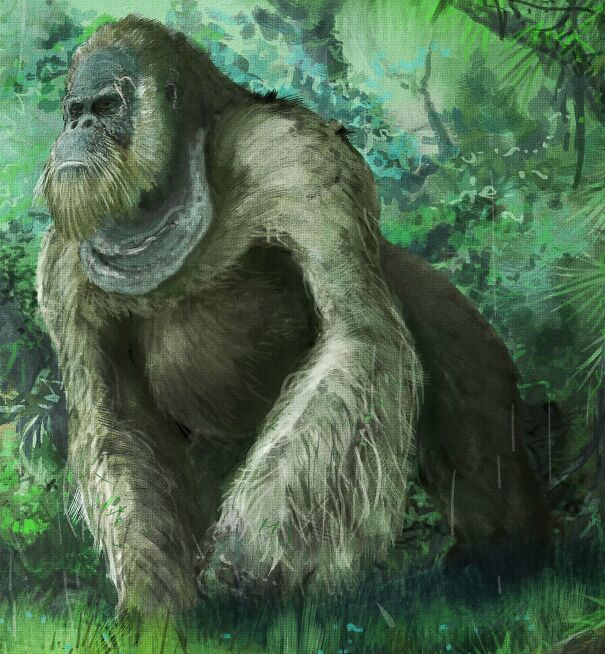
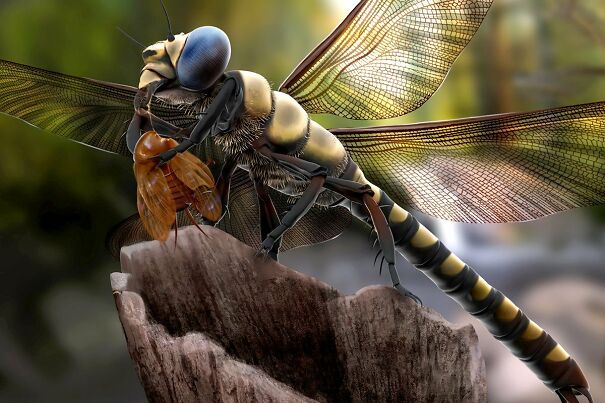
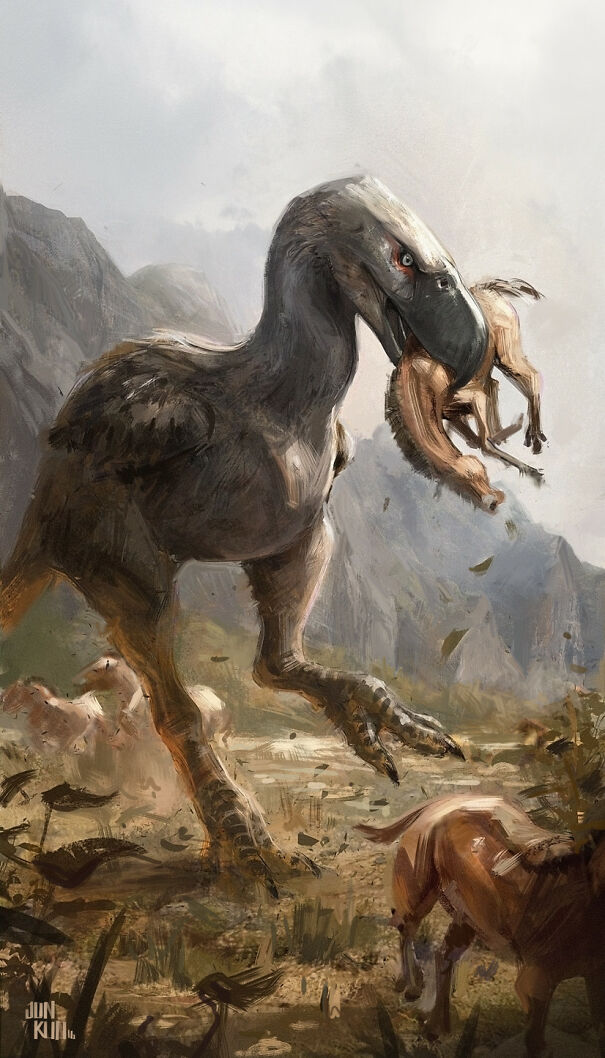




0
1